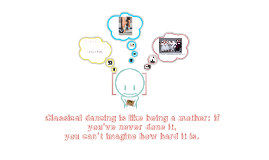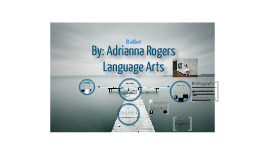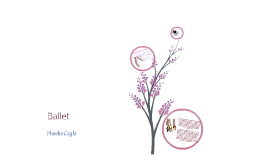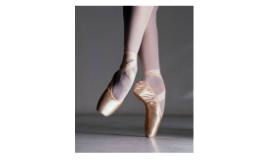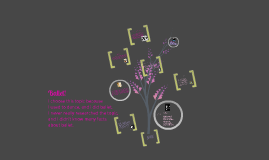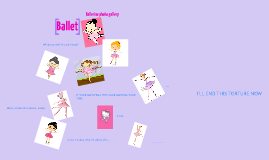Ballet
Transcript: In 1700 many of the words and movements common in today's ballet were already in use, including jeté, sissone, chasse and pirouette. But in 1730 ballet began to change. No longer were elegantly performed poses enough to quench the pallets of ballet audiences. Dancers took to the air, they began to leap. Because of their slighter stature and greater agility, women started to replace men in principal roles. Next came the discarding of restrictive costumes. Marie Sallé literally let her hair down and donned looser clothes for her ballet d'action, and Marie Ann Cupis de Camargo took the heels off of her shoes and shortened her skirts to perform the techniques of entrechat quatre and cabriole. Toe dancing began to develop at the very tail end of the 1700's. Dancers balanced on their toes in attitude for just moments, wearing soft ballet slippers. Mind you, not like the soft leather ballet slippers worn today, by any stretch of the imagination. Today's ballet shoes are constructed of thin, flexible leather, the pleats of which are precisely stitched flat to a sueded sole so soft and smooth that the dancer hardly feels anything on their feet at all. No, these were the less refined, simple shoes of the times, radical changes in dancewear would take place over the next hundred years. Ballet Dancing en Pointe The ballerina who is traditionally credited with being the first dancer to dance en pointe was the Italian, Marie Taglioni. Taglioni wore satin ballet slippers that had leather soles. Her ballet shoes had to be darned on the sides for strength . But they were not darned on the tip of the shoe. She danced without shoe support, as though barefoot. The blocked pointe shoe with a shanked sole did not evolve until much later. Italian schools pushed technique to the limit. Pierina Legnani was the first to perform thirty-two fouettés on pointe which caused a huge sensation. The Italians were keeping a closely guarded secret, however, they were developing better shoes. Italian ballerinas were dancing in shoes that were harder, stronger and more supportive than those worn by Marie Taglioni. Russian ballerinas had to catch up technically, but could not do so because of their shoes. In time, Russian shoes were made firmer, and eventually grew quite hard and stiff. Even today Russian made pointe shoes are stiffer than other makes. Satin, leather, paper and paste were, and still are, the primary components of a blocked pointe shoe. Contrary to some people's belief, there is no wood involved in this construction. Pointe shoes are made inside out and turned after the box has been formed which is achieved by building layer upon layer of paper and special paste, the formula to which each manufacturer held sacred. When the heat of a dancer's foot warms the box of the shoe, the special paste then moulds it to the shape of her foot. The foot is supported from underneath the arch by a stiff spine, called a shank. The outer material of a pointe shoe is usually pink satin. When in the early 1400's the Italians held their pageants of music and dance called balletto, what was worn on their feet was the fashion of the times, not a shoe specifically designed for dance. And when Catherine de Medicis brought ballet to France, in the mid 1600's, the Parisian version of ballet although less cumbersome in costuming than the earlier Italian displays, still did not have a shoe created for the express purpose of dance. It was not until the late 1600's that King Louis XIV wore his high-heeled shoes with the large guilt buckles complete with shining sun rays, that shoes took on a more important role in the ballet. The shoes worn at Court were made of a very delicate upper, such as damask, silk or other fine fabrics, with a leather sole. King Louis made a habit of turning his toes outward to pompously show off his shoes. Oddly enough, that simple motion of turn out was perceived as extremely graceful and had some influence on what became the five basic positions of ballet. Soft Ballet Shoes on Stage Ballet Phoebe Cagle






